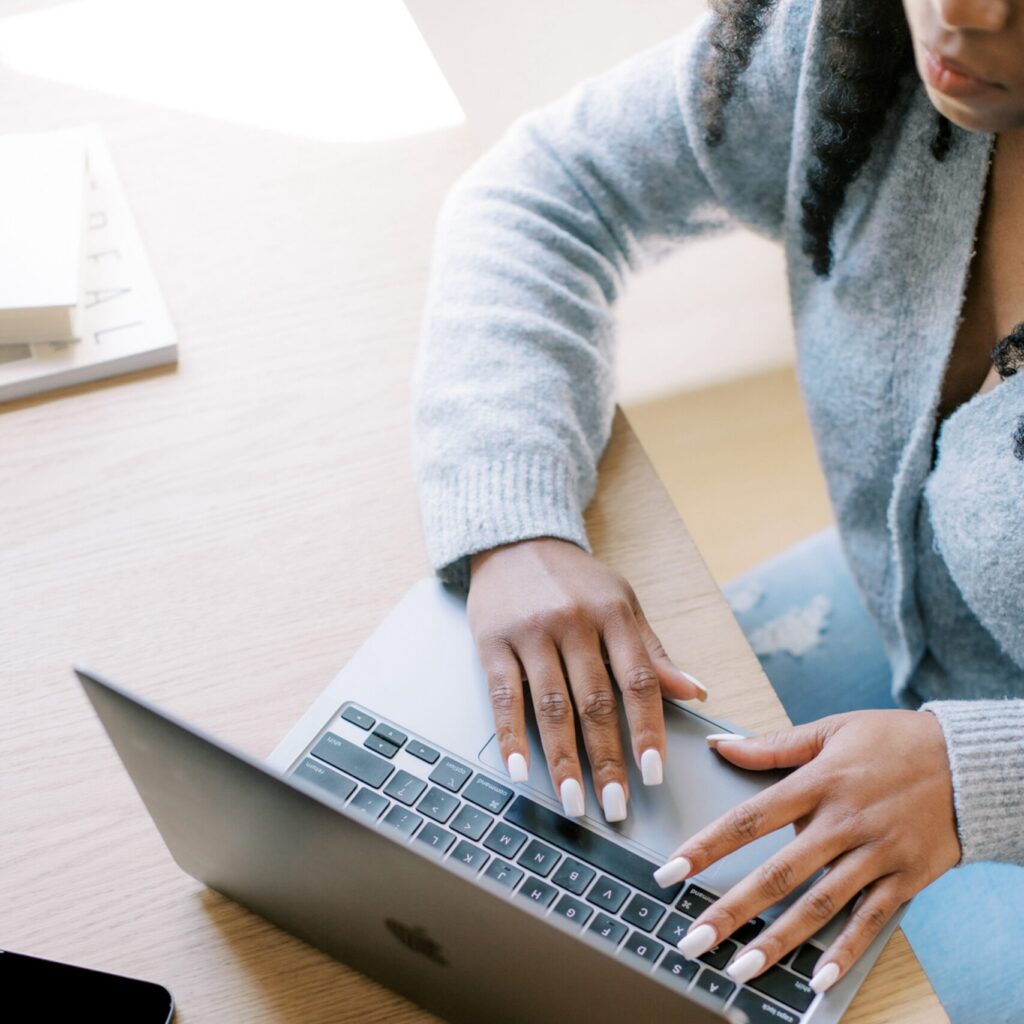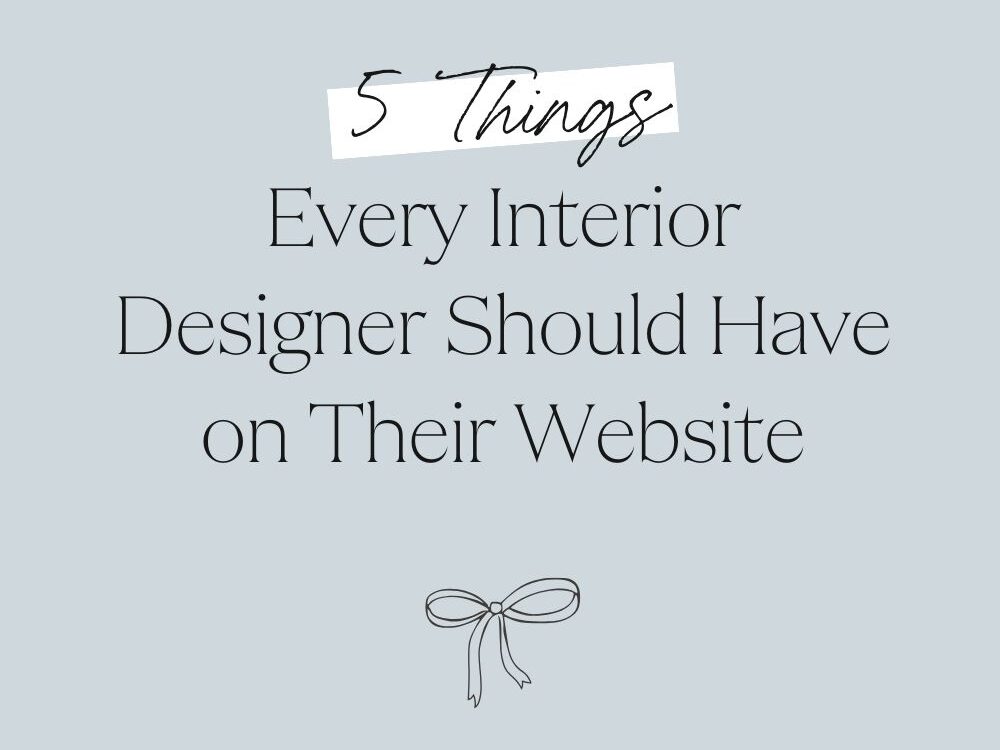Swan Haus
welcome to
Explore
Stay in Touch
Sign up below to join the Katie & Co. Collective and receive tips and tricks straight to your inbox!
Led by founder Katie Mask, Swan Haus provides interior designers with elevated, strong, strategic brands so they can joyfully & efficiently build a lasting legacy.
As an interior designer, you likely spend hours upon hours making your clients’ dream space come to life. You take special care to find the perfect color scheme for each room. Every piece of furniture and décor is thoughtfully chosen to provoke a specific feeling as soon as someone enters the space. You take time to curate every detail to perfection.
Your website as an interior designer is the online home for your business and should be completed with just as much finesse. When a visitor clicks on your home page, it should feel as if they are virtually stepping into your storefront. Your website needs to have all the visual and written information your potential clients need to learn about you and your work so that they can then decide to hire you.
When it comes to creating a website, especially if you’re an interior designer, five key components should not be overlooked. These components are key to building a compelling and beautiful website that will wow your future clients.

One || Your Location
You’d be surprised how often this is missed. Your location should be clearly stated right on your home page. Stating your location has multiple benefits for you and for your prospective clients. First of all, it’s important from an SEO standpoint. Displaying your location on your website assists Google in accurately directing relevant searches your way. We always recommend winning your local SEO searches before attempting to rank for other locations.
On the client side, knowing your location is crucial before starting the inquiry process. If you’re open to travel, communicate that explicitly. However, clients appreciate upfront clarity on whether they are engaging with a local designer or one based out of state and willing to travel. This transparency ensures that clients are aware of these details before delving too deeply into the collaborative process.
Two || An Explanation of What You Do and Who It’s For
Clarity is king. Make sure visitors understand exactly what you do in the first few seconds of arriving on your website. Resist the urge to be clever or cutesy here – it’ll actually do more harm than good. Confusion will only drive visitors away. Your website should scream interior designer from the first headline to each and every image.
You should also take time to explain what your ideal client looks like. Let people know what type of what projects you typically work on, what type of interior design you do, and what styles you specialize in. Being specific will help draw in your ideal client and repel a client who would be a bad fit.
Three || Beautiful Photos of Your Work
You’ve spent literal *years* working on various projects that you are incredibly proud of. So please, please, please, take the time to get it professionally photographed. Make a plan to do it before each and every project. Make your clients aware from the beginning that photography is part of the process of working with you. Help them feel comfortable, understand the timeline, and get excited. Start planning the photo shoot in advance so you can plan for any styling changes that might need to be made in order for you to showcase the work in your portfolio.
Putting in the time and investment for professional photography will enhance your image on social as well as your website, help you book better, higher-paying clients, and start positioning you as a true expert in the industry. This is no time to play small!
Four || An Explanation of Your Unique Process
There are likely dozens of interior designers in your area, but each of you is unique and different. You know what sets you apart from all the others, but does the internet know? Now that might sound like a silly question, but it really is important. People won’t know what makes you different unless you tell them.
It may sound obvious, but the first step is actually processing and understanding *for yourself* what makes you different. We’ve worked with dozens of designers, and less than 10% could clearly and confidently say what made them different or why a client would choose them over the competition. Hint: if your differentiator is your “great customer service”, you’re not getting specific enough. (Almost every designer I’ve worked with has started with this). What does great customer service look like for your firm? Get specific. If you need to, ask past clients what they loved about working with you to help you find your superpower.
Once you can clearly define what makes you unique, start putting together an outline of your process, highlighting all those “superpowers” you’ve thought of. Anticipate questions that potential clients may have. Do you spend a lot of quality one-on-one time discussing your client’s vision for their space before you begin the grunt work? Or do you save your clients time by creating beautiful, functional spaces with minimal effort on the client’s end? Is most of your process online for easy communication or do you value the connection and collaboration of in-person meetings? Do you create mood boards or 3D renderings to visually express your plans for a project? Help future clients know exactly what working with you would look like. As you can see, there are so many ways to run a business – by specifically sharing your process, you’ll avoid sticky situations or missed expectations with clients.
Five || Testimonials From Previously Wowed Customers
Before you purchase a product, especially a high-ticket item, what do you do? Check the reviews of course! Did you know the average consumer reads 10 online reviews before making a purchase decision? Additionally, testimonials have been proven to increase conversions on sales pages by 34%. (source) Testimonials or reviews are paramount in helping visitors trust you – it shows that not only do YOU think you’re amazing, but your clients do too. Your prospective clients will want to know that you have done this before and that you have exceeded expectations. If you don’t already, implement a feedback form for every project you complete to start gathering testimonials.
Just as you meticulously curate homes to perfection, your online home – your website – deserves the same thoughtfulness, intention, and finesse. If you need help implementing these strategies into your interior designer website, don’t hesitate to reach out. Reach out today to get started crafting your stunning and strategic website.

Have questions? Shoot me an email!
Check out more from the blog here.
Follow along for more business and design tips and tricks on Instagram!
Like this post? Save it on Pinterest!
hide —
Leave a Reply Cancel reply
Brand and Web Design for Interior Designers
©2019-2025 swan haus, llc | legal | site credits
The Swan Society
sign up for our email community
view comments +